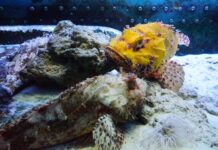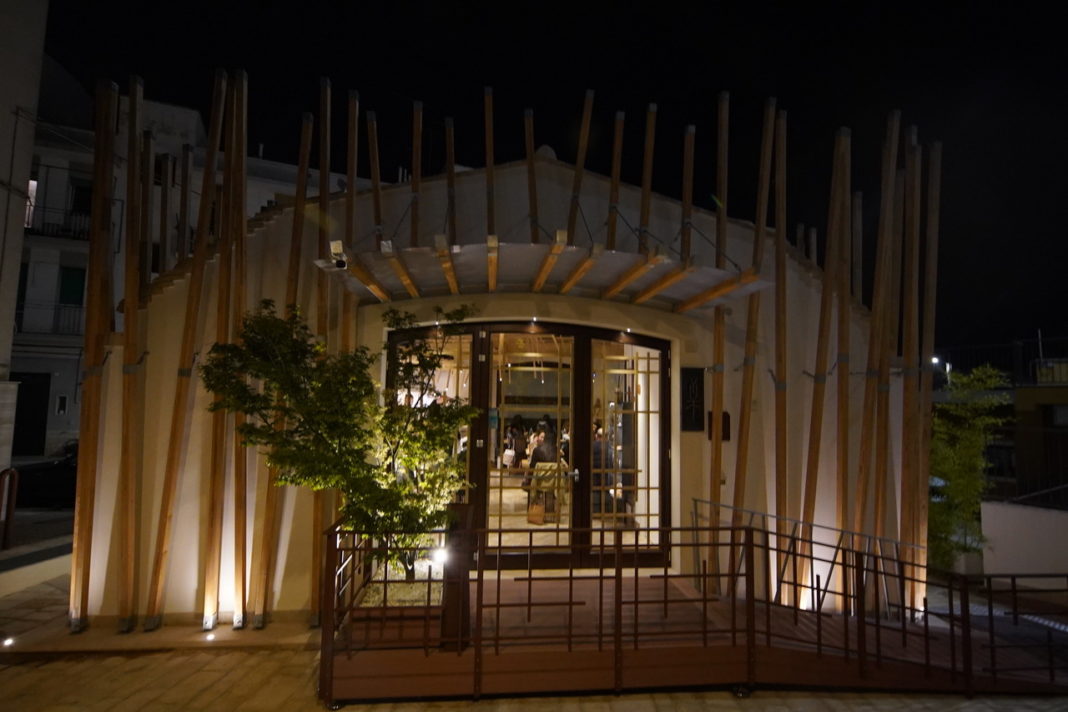In our category #buongusto some time ago we told you about the Japanese bon ton, that is the rules to follow when you sit in a Japanese restaurant both, for the lucky ones, in the country of the Rising Sun and in our peninsula where now the Japanese restaurants they are numerous.
At Yuki’s, authentic Japanese cuisine
Today, instead, we want to tell you about how was born one of the most traditional Japanese foods known and consumed all over the world: sushi. But also of the encounter between two cultures, distant and apparently different, that in the Yuki restaurant in Noci merge in an embrace, recognizing themselves in a common place to both.
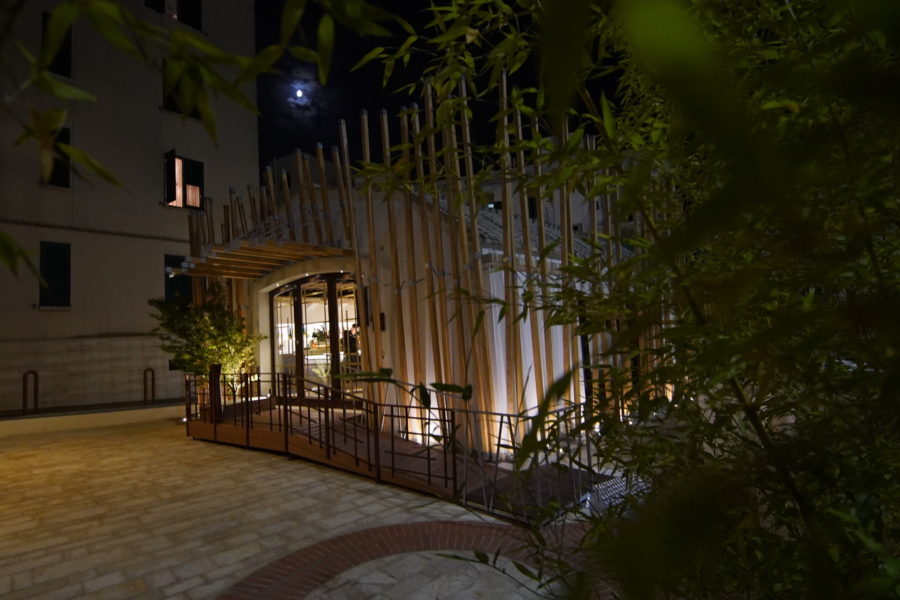
This place is the neviera, which was in Puglia and Japan had a fundamental role: that of collecting ice to get water in areas plagued by drought. In Noci, the winter snowfalls allowed the accumulation of snow in the underground areas of the urban neviera, as well as in the Japanese city of Kanazawa, on the west coast of the island of Honshu, for the same purpose was used an ancient neviera in the Himuro language, “home of the ice”.
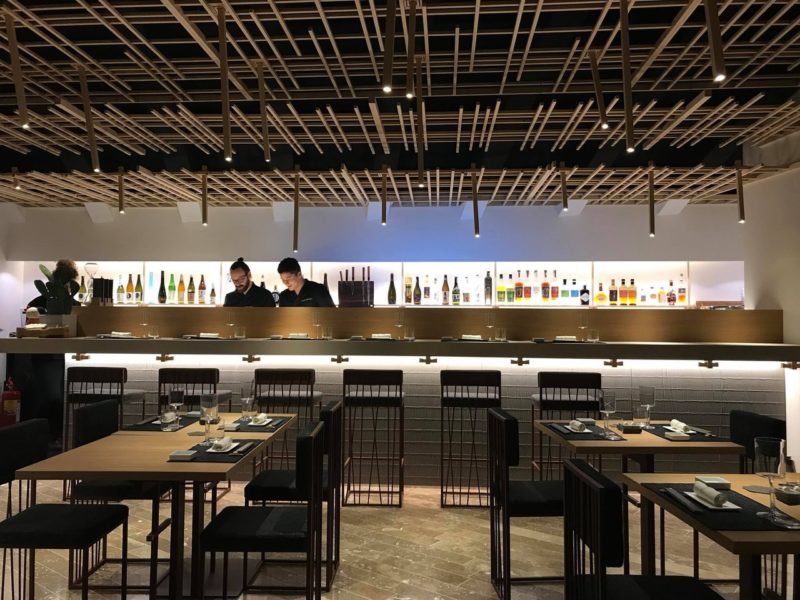
And Yuki, in Japanese, means snow and the restaurant was a neviera. Here chef Kazunori Matsushita, son of art and expert in wabi sabi cuisine, personally selects the products for the preparation of his dishes, respecting the criteria of seasonality, quality and freshness and proposing the true traditional Japanese cuisine in a comfortable environment, on the model of authentic Japanese restaurants.
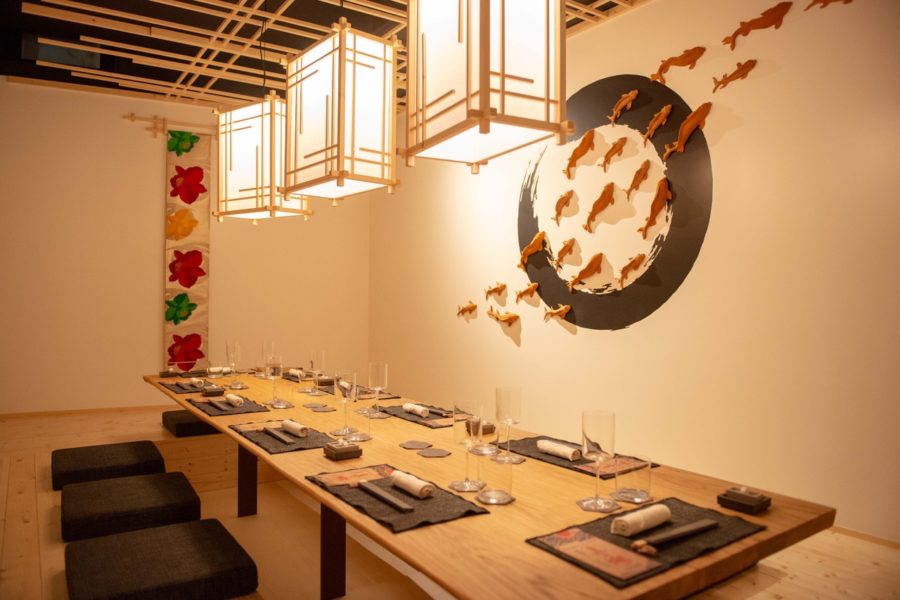
In short, as you will have understood, the Yuki experience won us over immediately and also the fact that Otto was always welcome with a thousand cuddles by Maurizio and Serena convinced us to come back several times to taste the chef’s proposals.

But we experienced the true embrace between Puglia and Japan during the evening of March 14 in which at table the Japanese flavors were combined with the Apulian wines of the Cantine Elda from Troia. During the evening we let ourselves be enchanted by the preparations presented with grace and competence by the “hosts”: because this is the first impression, that of being invited to dinner at a friend’s house with a particular taste for the furnishings and oriental atmosphere!
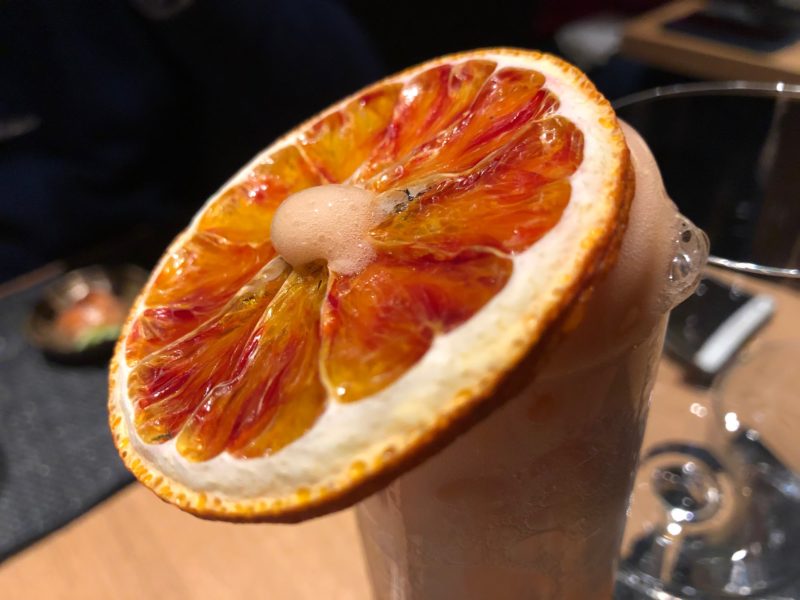
A hug, a kiss on the cheek, just like friends do, and then at the table the first cuddle: the welcome cocktail prepared by Silvio, Yuki’s bartender. Beautiful to see and ideal for photos to post on Instagram, perfectly calibrated in the mouth between the sweet of Tarocco orange mousse, the sparkling of Elda sparkling wine, a pinch of salt and the light smoky effect of the slice of dried and charred orange decorate the whole.
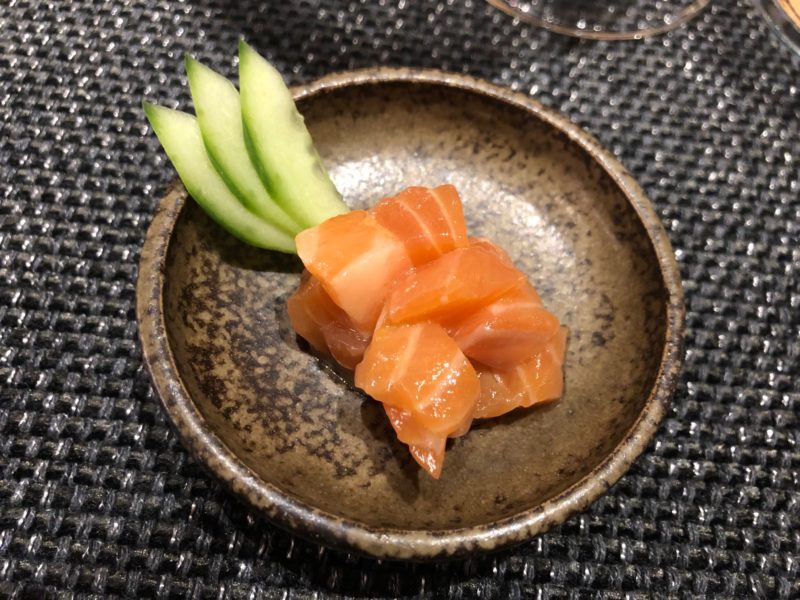
At this point a real immersion into the most authentic Japanese cuisine began, which is not just sushi and sashimi.
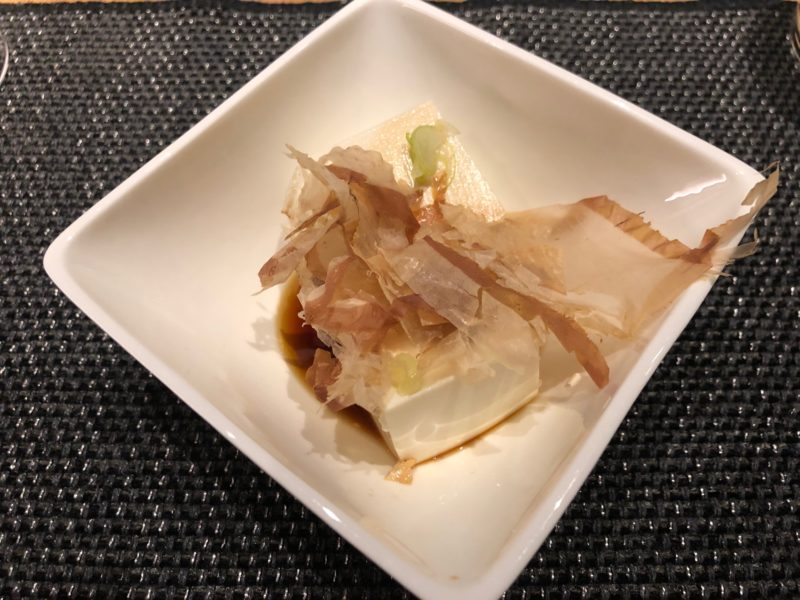
The first of the dishes to be served, what we would call welcome, even if the Japanese rules do not contemplate a real succession of dishes as in Italy, was the Nama Tofu Katsuo, literally the fresh tofu with very fine reddish-colored flakes and smoked flavor of a fish that in Japanese is called “katsuo” and in Italian tuna bonito. Tofu, made from soya milk subsequently curdled and originally from China, was introduced to Japan during the Nara era in the 8th century and is closely linked to Buddhism, in fact it constitutes the main source of protein in the vegetarian Buddhist diet. If I had to define the taste of this combination that I had never tasted before I would rightly use the term umami, which has no counterpart in Italian but is considered a sort of fifth taste, in addition to the classic salty, bitter, sweet and sour taste. It could be translated with tasty and this is the intense and concentrated flavor of fish, typical of dehydrated foods like Katsuo flakes.

Following this, the starter, the Kimutako with octopus, cucumber and hot sauce arrived at the table. These two dishes were paired with Elda sparkling wine, which with its slightly acidic taste was able to contrast well the flavor of the dishes.
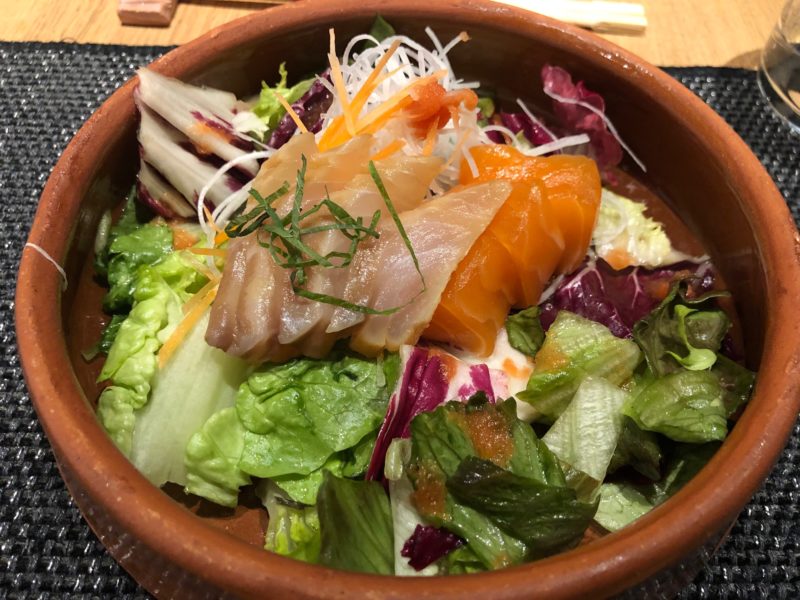
The task of refreshing the palate with Sashimi salad, a mixed salad base with a classic of Japanese cuisine, the fish cut into thin slices. Literally, in fact, the term sashimi means “cut body”, but behind the simplicity of this dish lies a know-how that requires years of learning. Not only are there special techniques for cutting fish, but specific cuts that apply to different fish and even molluscs.
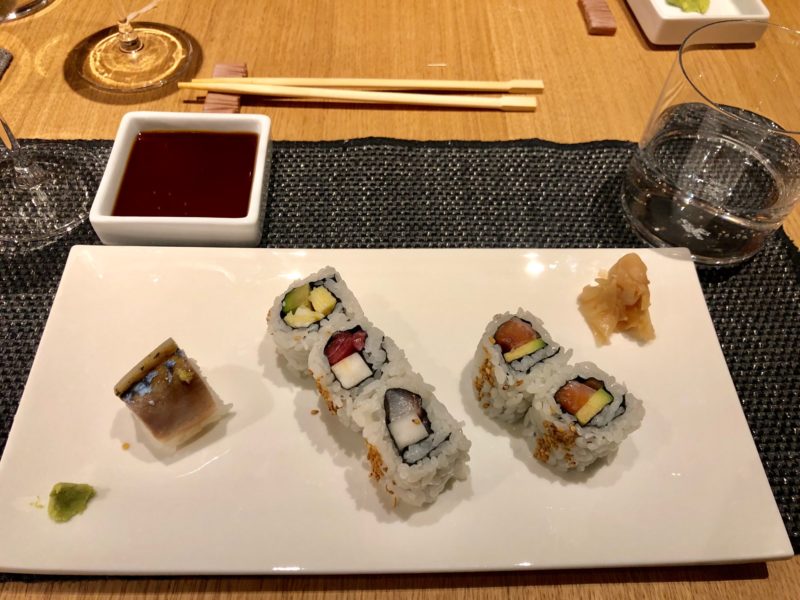
Then the symbol of sushi all over the world, the Makis, rolls with toasted algae called Nori in the center to contain the filling and rice outside with sesame seeds or Tobiko, fish eggs, proposed with a sauce soy in the appropriate saucer, Wasabi the green spicy sauce and Gari the pickled ginger that serves to clean the palate between courses and so that you can enjoy the next bite without any aftertaste.
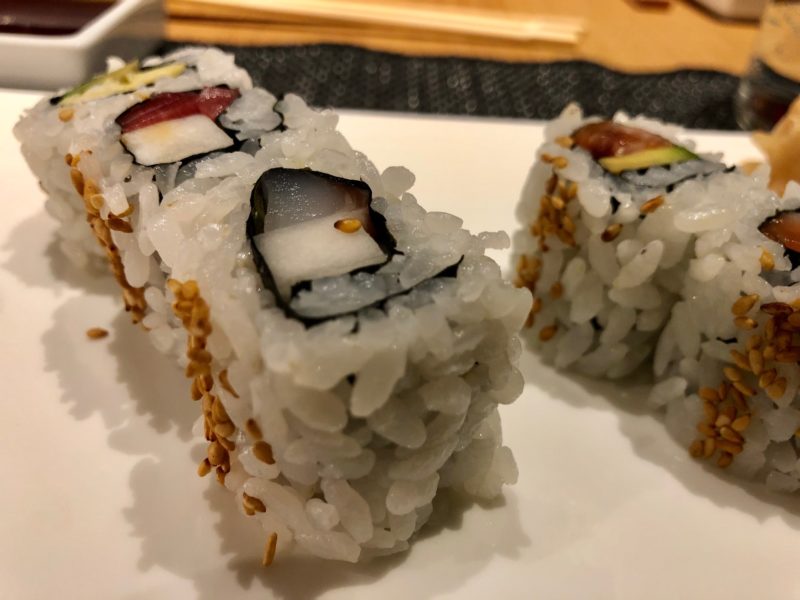
But let’s jump over time. What is the origin of sushi? The history of sushi dates back to around 2000 years ago when the cultivation of rice arrived in Japan from Southeast Asia via China and was a method of preservation: the fish was placed between layers of rice, kept pressed for a few weeks and left to ferment for months. Once the procedure was finished, the rice was discarded and only the fish was consumed. This fermentation gave a slightly sour taste to the preparation. Over time, from a method of conservation turned into a real recipe, the fermentation times were shortened thanks to the addition of vinegar and rice was also eaten.
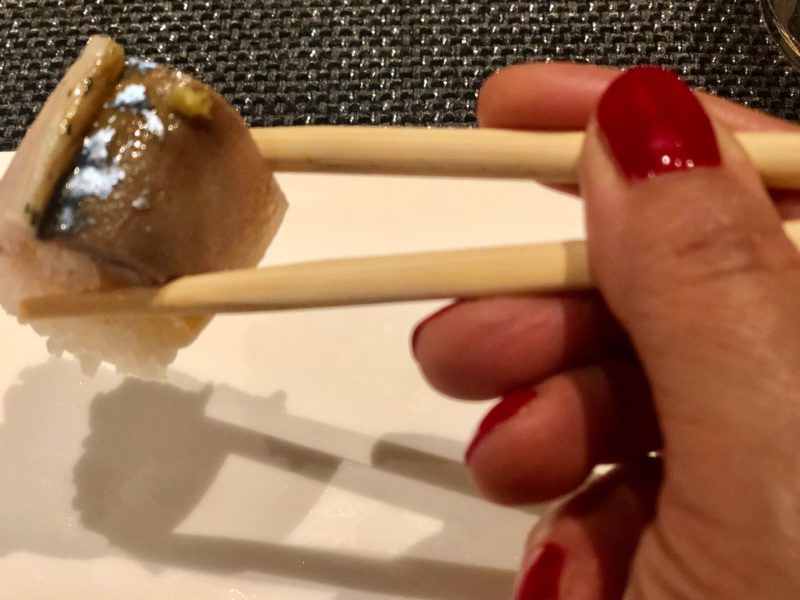
And when did Westerners discover sushi that means “sour” in Japanese? The story has it happened in 1953, when Prince Akihito offered it to some American officials during a reception at the Japanese embassy in Washington. Since then it has spread all over the world so that in 2013 it entered the intangible cultural heritage of UNESCO. And from street food it has become a real art: it is prepared to be enjoyed first of all with the eyes through the careful, harmonious and balanced arrangement of the individual morsels, demonstrating the importance of the aesthetic aspect and in general the priority of sight on taste.
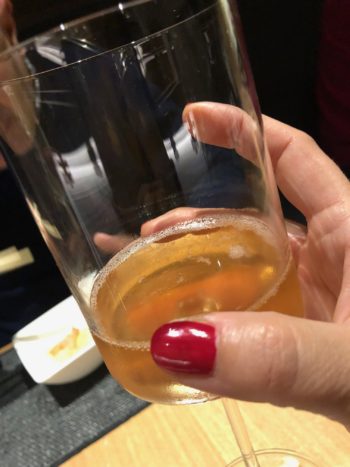 Let’s go back to dinner. On sashimi and sushi we tasted the white of the evening’s wine cellar, Voiret, a Sauvignon Blanc with greenish reflections and a delicate taste that failed to emerge between the acidity of the rice and the intensity of the fish fillets.
Let’s go back to dinner. On sashimi and sushi we tasted the white of the evening’s wine cellar, Voiret, a Sauvignon Blanc with greenish reflections and a delicate taste that failed to emerge between the acidity of the rice and the intensity of the fish fillets.
While the rosé wine Pesca Rosa, made from 100% Nero di Troia grapes, has married very well with the savory subsequent dishes with its hints of fruit.
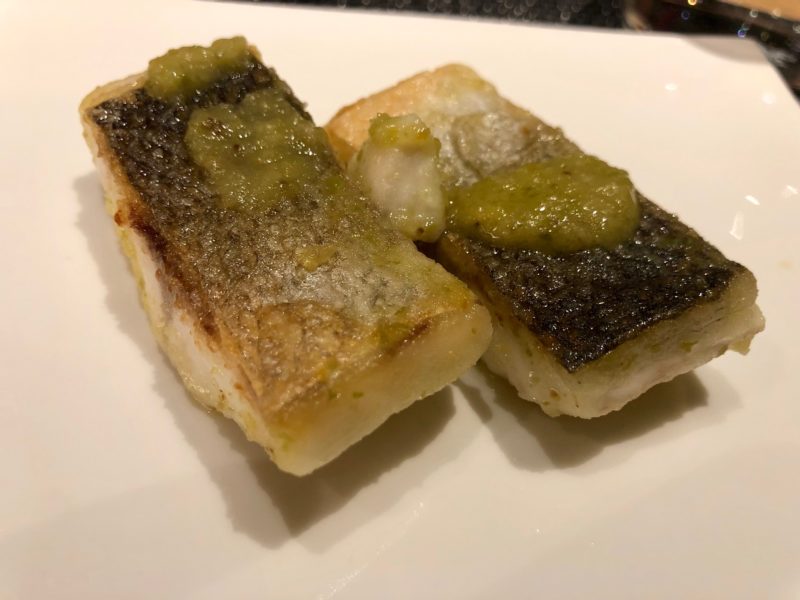
On the table, Suzuki yuzukosho and Shake teriyaki took turns. The first is reminiscent of a well-known motorcycle manufacturer but in Japanese it is also the name of the sea bass which in this case was marinated in the Yuzu Kosho sauce, a spicy sauce with a long tradition, based on chilli flavored yuzu, the Japanese lemon with the unmistakable and unique aroma.
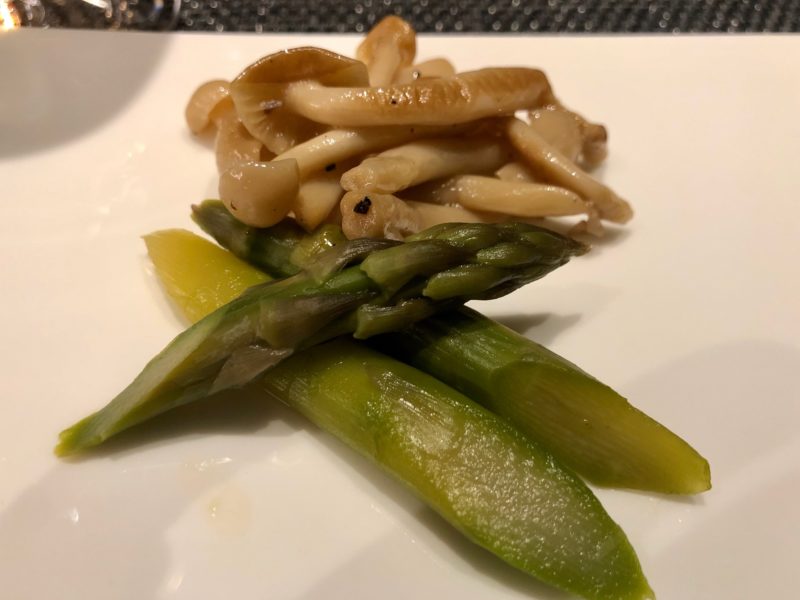
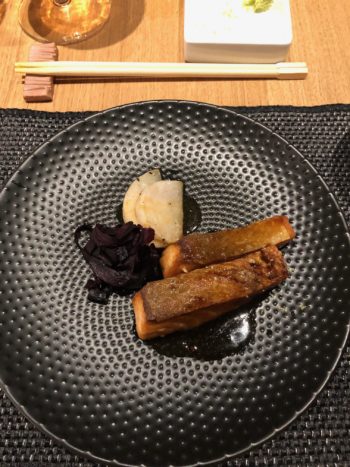 The Shake is the salmon that was offered to us with the Teriyaki sauce, a soy sauce based dressing, Mirin, a kind of sweeter, thicker and less alcoholic sake, and sugar.
The Shake is the salmon that was offered to us with the Teriyaki sauce, a soy sauce based dressing, Mirin, a kind of sweeter, thicker and less alcoholic sake, and sugar.
As a side dish for asparagus and Shimeji, the delicious Japanese mushrooms that we enjoyed for the first time right here from Yuki.
The dinner ended in sweetness with Chiffon Matcha, a delicious very light cake prepared with Japanese green tea.
And Otto? He was not dry-mouthed: for him a bowl filled with fragrant rice that repaid him of the patient waiting at our feet.
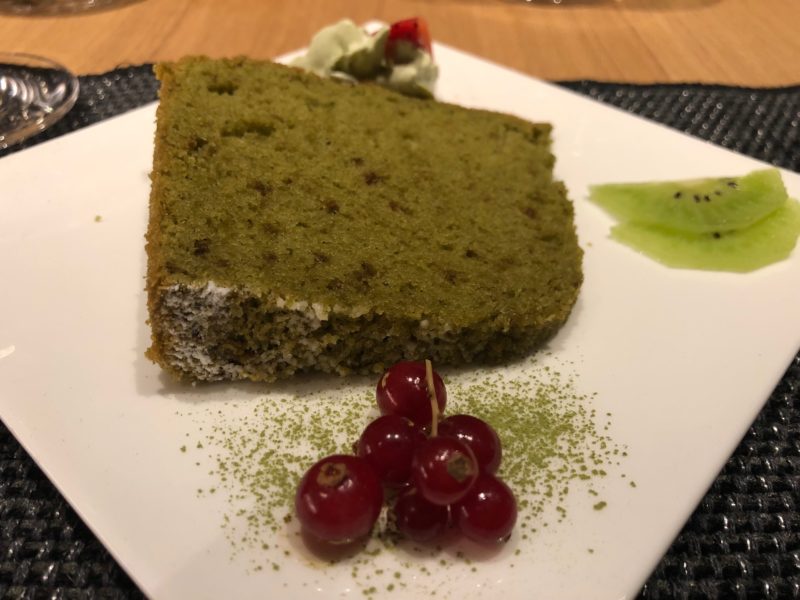
Yuki Cucina Giapponese
Via Cap. Magg. Recchia, 24 – Noci (Ba)
Info: +39 080 4949680 – info@yukiristorante.it




